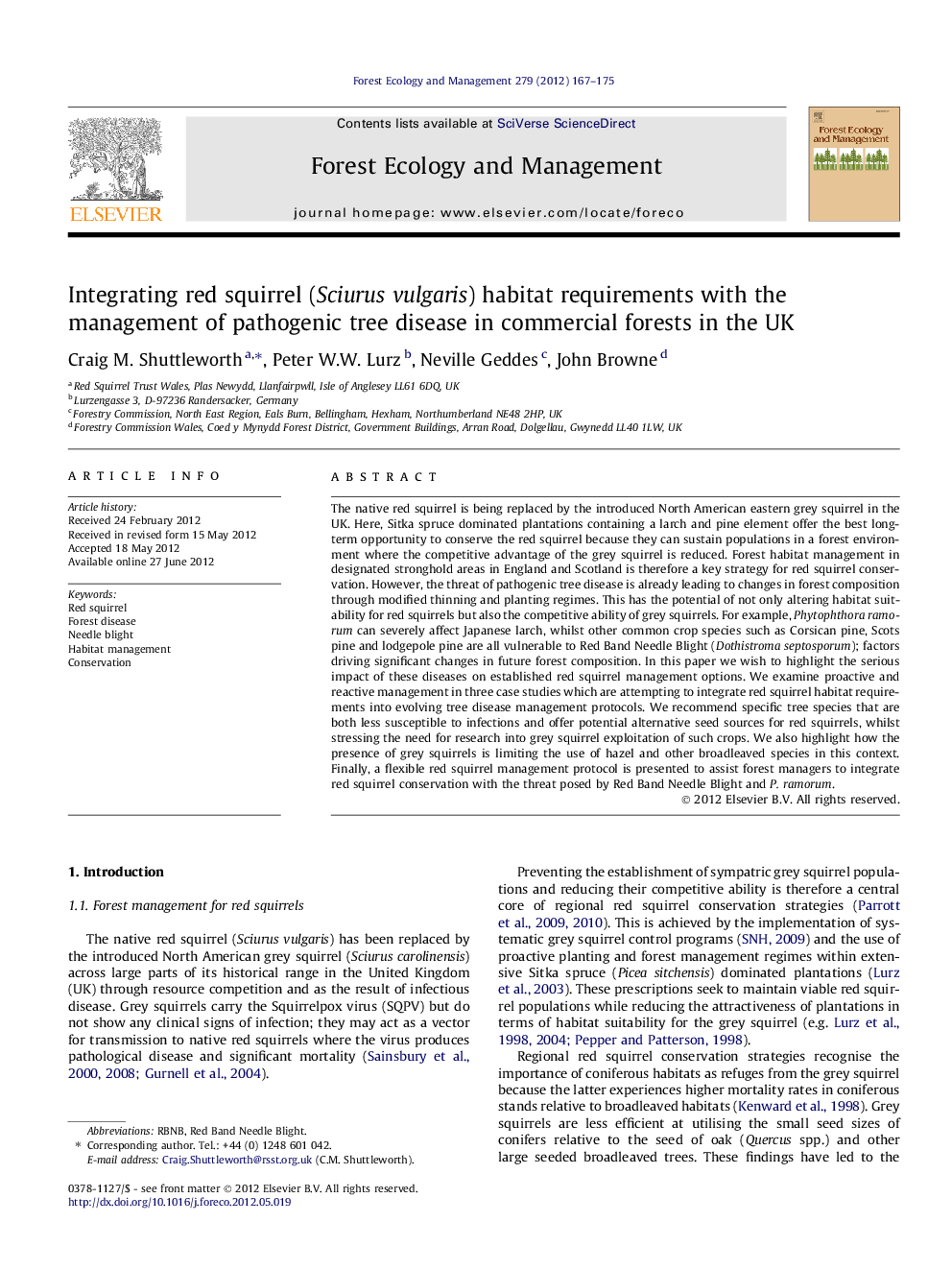| کد مقاله | کد نشریه | سال انتشار | مقاله انگلیسی | نسخه تمام متن |
|---|---|---|---|---|
| 87549 | 159255 | 2012 | 9 صفحه PDF | دانلود رایگان |

The native red squirrel is being replaced by the introduced North American eastern grey squirrel in the UK. Here, Sitka spruce dominated plantations containing a larch and pine element offer the best long-term opportunity to conserve the red squirrel because they can sustain populations in a forest environment where the competitive advantage of the grey squirrel is reduced. Forest habitat management in designated stronghold areas in England and Scotland is therefore a key strategy for red squirrel conservation. However, the threat of pathogenic tree disease is already leading to changes in forest composition through modified thinning and planting regimes. This has the potential of not only altering habitat suitability for red squirrels but also the competitive ability of grey squirrels. For example, Phytophthora ramorum can severely affect Japanese larch, whilst other common crop species such as Corsican pine, Scots pine and lodgepole pine are all vulnerable to Red Band Needle Blight (Dothistroma septosporum); factors driving significant changes in future forest composition. In this paper we wish to highlight the serious impact of these diseases on established red squirrel management options. We examine proactive and reactive management in three case studies which are attempting to integrate red squirrel habitat requirements into evolving tree disease management protocols. We recommend specific tree species that are both less susceptible to infections and offer potential alternative seed sources for red squirrels, whilst stressing the need for research into grey squirrel exploitation of such crops. We also highlight how the presence of grey squirrels is limiting the use of hazel and other broadleaved species in this context. Finally, a flexible red squirrel management protocol is presented to assist forest managers to integrate red squirrel conservation with the threat posed by Red Band Needle Blight and P. ramorum.
► We examine the integration of red squirrel conservation with forest tree disease management.
► Proactive and reactive protocols are presented for Phytophthora ramorum and needle blight.
► Three UK forest case studies are presented.
► Minimising the competitive advantage of grey squirrel over red squirrel is stressed.
► Uncertainties of future severity of tree disease are discussed.
Journal: Forest Ecology and Management - Volume 279, 1 September 2012, Pages 167–175